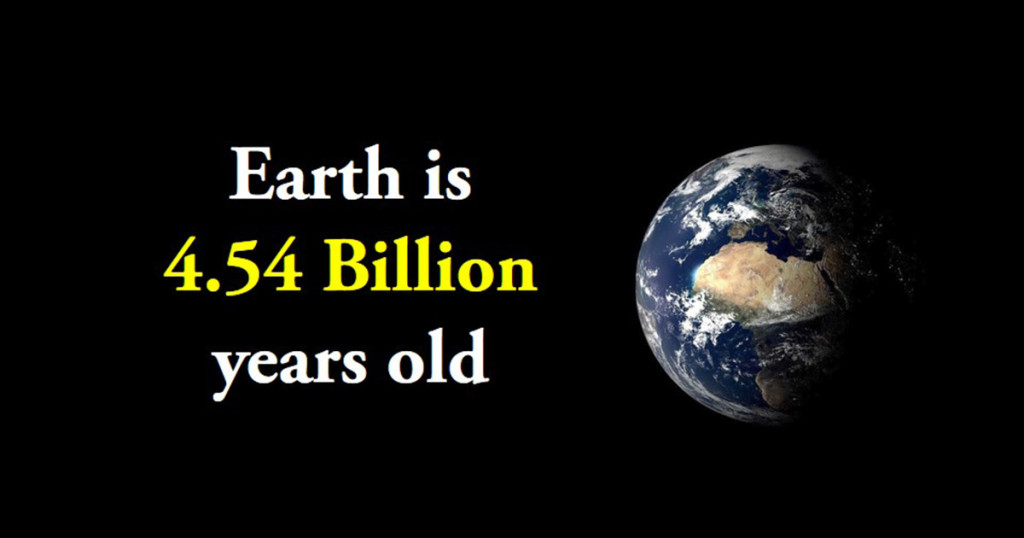
Scientists have not yet found a proper way to examine the exact age of the Earth. There are many theories and assumptions, but according to most popular theory, age of the Earth is 4.54 billion years with an error range of 50 million years. This age is predicted by dating the rocks in the ever-changing crust, along with other bodies such as the moon and meteorites. Scientists have analyzed ancient rocks like Acasta Gneisses in Canada, Isua Supracrustal in West Greenland and some from Minnesota River Valley, northern Michigan, Swaziland, Western Australia etc. These rocks have been dated by a number of radiometric dating methods. Based on old and presumed single-stage leads coupled with the Pb ratios in troilite from iron meteorites, the age for the Earth is 4.54 billion years with an uncertainty of approx 1 percent.
The Moon is a more primitive object in solar system than Earth as it has not been much disturbed by plate tectonics, so some ancient rocks from there are more plentiful to determining the age. Only a few number of rocks were returned to Earth by lunar missions which vary greatly in age. The oldest dated moon rocks have ages between 4.4 and 4.5 billion years. These primitive objects along with thousands of meteorites provide the best ages for the time of formation of the Solar System. The study of more than 70 meteorites of different types and by radiometric dating techniques results the solar system’s age between 4.53 and 4.58 billion years ago. Thus based on the evolution of globular cluster stars, our Milky Way Galaxy is 11 to 13 billion years old and Universe is 10 to 15 billion years old based on the recession of distant galaxies.
In addition to these two pieces of evidence, scientists have also studied the ages of meteorites, the ages of the oldest minerals on Earth, and the ages of the oldest rocks on Mars. All of these studies have provided supporting evidence for an age of the Earth of around 4.5 billion years.
One of the most widely accepted theories that explains the age of the Earth is the nebular hypothesis, which proposes that the Solar System formed from the collapse of a cloud of gas and dust, called a solar nebula. According to this theory, the Sun formed at the center of the nebula and the planets formed from the leftover material. This process would have taken place around 4.5 billion years ago, which is consistent with the age of the Earth estimated by scientists.
